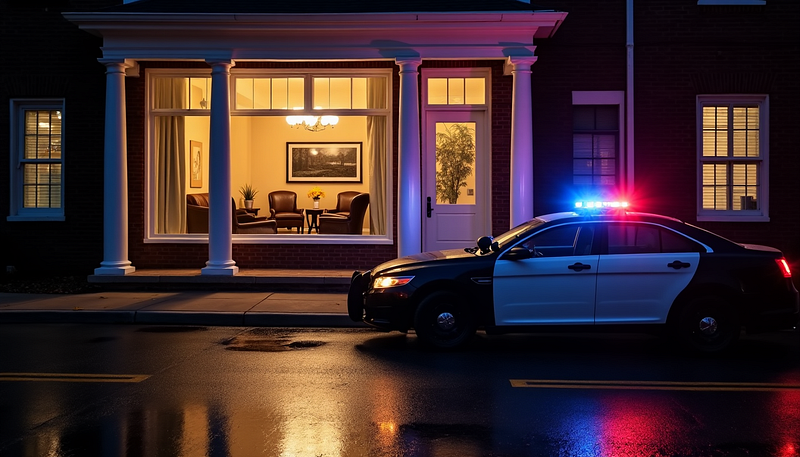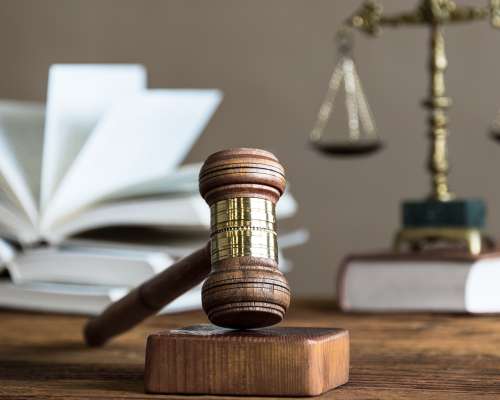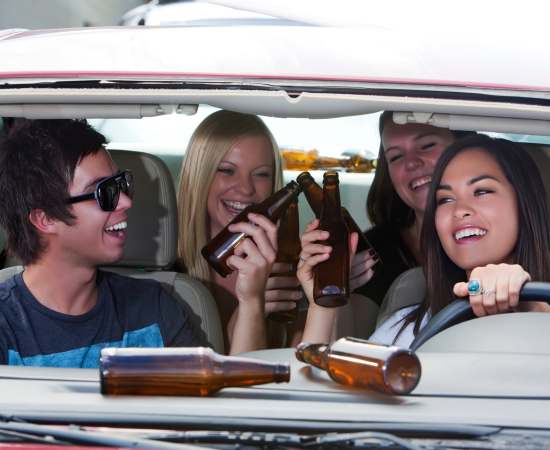
A DUI arrest in Virginia can change your life in mere minutes. Facing DUI charges brings immediate consequences, from license suspension to potential jail time, making a DUI lawyer essential for protecting your rights and future. As experienced DUI lawyers in Virginia, we understand the complexities of these cases and the importance of immediate action.
However, many people arrested for DUI make critical mistakes in the hours and days following their arrest simply because they don’t understand the legal process or their rights. Working with an experienced DUI lawyer Prince William County VA at The Law Offices of SRIS. P.C. helps ensure proper handling of your case from the start.
This guide explains exactly what happens after a DUI arrest in Virginia, from the initial police stop through the legal proceedings, and outlines the specific steps you should take to protect your interests. As a Virginia drunk driving lawyer, I’ll provide insights into the process and how to navigate it effectively.
Key Considerations for a Lawyer’s Experience Include:

Every attorney associated with our firm has over 15 years of experience, and most are licensed to practice in multiple states.
SRIS Law Group’s commitment to diverse representation is evident through their multilingual team, offering services in:
Police officers in Virginia must have reasonable articulable suspicion to initiate a DUI traffic stop. This suspicion typically stems from observable driving behaviors such as erratic movements, swerving, or traffic violations.
Initial Police Contact
Initially, the officer approaches the vehicle and requests standard documentation—a driver’s license, registration, and insurance proof. During this interaction, the officer observes specific indicators of potential impairment, including slurred speech, bloodshot eyes, or the smell of alcohol. The officer’s observations during these first moments form a crucial part of building probable cause for further investigation.
Field Sobriety Tests
Subsequently, if the officer suspects impairment, they may request standardized field sobriety tests (SFSTs). The National Highway Traffic Safety Administration has approved three primary tests:
Specifically, these tests must be conducted under ideal conditions for maximum reliability. Furthermore, a drunk driving attorney can challenge these results based on various factors, including medical conditions, environmental circumstances, or improper test administration.
The breath testing process involves two distinct stages. First, the officer may request a preliminary breath test (PBT) using a portable device at the scene. Although not admissible in court, this preliminary test can influence the officer’s decision to make an arrest.
Additionally, under Virginia’s implied consent law, if arrested, drivers must submit to an official breath or blood test at the station. A VA DUI lawyer at The Law Offices of SRIS. P.C. can examine whether proper protocols were followed, as the test must be administered by a licensed operator using approved equipment.
Notably, while drivers can refuse field sobriety tests without direct legal consequences, refusing the official breath test after arrest carries mandatory penalties, including a one-year license suspension for first-time refusal.

First, the booking process begins immediately after a DUI arrest in Virginia. Officers transport the arrested person to a police station or detention center for processing. The booking procedure involves collecting personal information, including name, address, birth date, and physical features.
Moreover, upon arrival at the facility, an observation period begins before administering another breath test. In particular, if the person refuses this test, law enforcement may obtain a warrant for a blood test, which produces more accurate results. The arrested individual then appears before a magistrate who determines bail conditions and custody status.

The administrative license suspension takes effect right after the arrest. The suspension periods vary based on offense level:
Consequently, the arresting officer must physically take possession of the driver’s license and deliver it to the magistrate. The court maintains possession of the license until the suspension period ends. As a result, during this administrative suspension, no restricted driving privileges are permitted, making it a complete suspension without exceptions.
The law permits challenging this administrative suspension through a court hearing. A Prince William County DUI lawyer from The Law Offices of SRIS. P.C. can file a motion requesting review within the same timeframe as bail appeals. The court must prioritize these suspension reviews over other docket matters. To succeed, the person must prove by a preponderance of evidence that the officer lacked probable cause for the arrest.
In cases where the vehicle is not parked safely, law enforcement can impound it, and the arrested person becomes responsible for all costs. The DUI lawyer in Prince William County, VA, can assist in addressing both immediate concerns like vehicle retrieval and the longer-term consequences of the arrest.
The Fifth Amendment of the U.S. Constitution provides fundamental protections for individuals arrested for DUI or DWI in Virginia. Understanding these rights can significantly impact the outcome of your case.
The Fifth Amendment safeguards your right against self-incrimination. Primarily, this means you can decline to answer questions from law enforcement officers. When taken into police custody, officers must inform you of your Miranda rights, which include:
Essentially, anything said to police after arrest without Miranda warnings cannot be used as evidence in court. Nevertheless, statements made during initial roadside questioning before arrest remain admissible, even without Miranda warnings.
A DUI defense lawyer can protect your interests from the moment of arrest. Certainly, when you request an attorney, all police questioning must stop immediately. Your legal representative can:
The discovery process forms a crucial part of your defense strategy. A DUI defense attorney in Virginia can obtain various types of evidence through proper legal channels. According to Virginia law, you have the right to:
Undeniably, the prosecution must prove their case beyond a reasonable doubt. Particularly important is understanding that the absence of chemical test results cannot be used as evidence against you in court except in specific rebuttal situations.
Our attorney can issue subpoenas for additional evidence and witness testimony to strengthen your defense. The discovery process varies by jurisdiction, with some counties allowing informal evidence review at the prosecutor’s office while others require formal motions.
Virginia’s legal system imposes strict penalties for DUI and DWI convictions, with consequences varying based on factors like blood alcohol concentration (BAC) and prior offenses.
A first DUI conviction carries a mandatory minimum fine of $250. The court can impose penalties of up to $2,500 and 12 months in jail. BAC levels primarily determine additional mandatory jail time—a BAC between 0.15% and 0.20% requires five days in jail, while levels above 0.20% mandate ten days.
License suspension remains a significant consequence. The court imposes a one-year license suspension, though drivers may request restricted driving privileges. Indeed, obtaining a restricted license requires installing an ignition interlock device for at least six months. A Virginia first-time DUI lawyer can help navigate these penalties and potentially negotiate for reduced sentences.
Second and subsequent DUI convictions face increasingly severe penalties. For a second offense within ten years, offenders face:
Third-offense penalties escalate substantially, becoming Class 6 felonies. The consequences include a mandatory minimum fine of $1,000 and indefinite license suspension. Similarly, jail time increases—90 days minimum for offenses within 10 years, extending to six months if within 5 years.
Fourth-offense convictions mandate one year of jail time. Likewise, the court orders indefinite license suspension and vehicle forfeiture if the defendant is the sole owner. These severe penalties underscore the importance of working with a proficient DUI lawyer in Virginia at The Law Offices of SRIS. P.C. to protect your rights and future.
Beyond fines, DUI convictions involve substantial additional expenses. The Department of Motor Vehicles charges reinstatement fees ranging from $145 to $225. Therefore, offenders must complete the Virginia Alcohol Safety Action Program (VASAP) and pay all associated costs.
The installation and maintenance of ignition interlock devices add further financial burden. Ultimately, insurance premiums typically increase significantly after a DUI conviction, impacting your finances for years to come.
Mr. Sris can help navigate these complex penalties and potentially negotiate reduced sentences where legally possible. The severity of these consequences makes professional legal representation crucial for protecting your rights and future.
Taking prompt action after release from a DUI arrest strengthens your defense strategy. First and foremost, the steps you take in the hours and days following release can make a substantial difference in your case outcome.
Primarily, write down every detail about your arrest while memories remain fresh. Record crucial information about:
In fact, no detail is too small – even seemingly minor observations could become vital evidence for your defense.
As soon as possible after release, begin collecting evidence to support your case. A DUI lawyer Prince William County VA can help obtain crucial documentation through proper channels. The prosecution must provide discovery materials, which typically include police reports, breath test results, and other relevant documentation.
Physical evidence from the arrest scene might prove valuable. Photographs of the location, weather conditions, or any relevant medical records should be preserved. In addition to these items, your DUI lawyer can file motions to obtain:
Presently, your attorney can file a motion to compel discovery, which the court typically grants. This ensures access to all evidence the prosecution holds.
Ultimately, securing experienced legal representation stands as your most critical step after release. The selection of a qualified DUI attorney deserves careful consideration, as their experience can significantly impact your case outcome.
When choosing legal representation, consider our team of attorneys who:
Your chosen attorney should begin working on your case promptly, as certain defense strategies require quick action. For instance, they might need to file motions to preserve evidence or challenge your license suspension within specific timeframes.
A professional DUI lawyer Prince William County VA can evaluate whether the police had probable cause for the traffic stop and arrest. They can also examine if proper protocols were followed during field sobriety tests and chemical testing procedures. Furthermore, your attorney can identify potential constitutional violations that could lead to evidence suppression.
Remember that statements made to law enforcement without an attorney present can complicate your defense. Once you secure legal representation, your lawyer can handle all communications with prosecutors and law enforcement, protecting your rights throughout the legal process.
Consider scheduling an attorney consultation to discuss your case and understand your options. Many DUI defense attorneys offer initial consultations to evaluate your situation and explain how they can help.
DUI and DWI arrests bring life-altering consequences that demand immediate, strategic action. Each decision made after arrest significantly affects case outcomes, from the initial police interaction through court proceedings. Understanding Virginia’s drunk driving laws, penalties, and defense options becomes essential for protecting your rights and future.
Time plays a crucial role following an arrest. Documenting details, gathering evidence, and securing qualified legal representation are vital steps toward building a strong defense. Though facing DUI charges feels overwhelming, several defense strategies exist—particularly when proper protocols or constitutional rights are violated during arrest procedures.
Legal experience proves particularly valuable given Virginia’s complex DUI penalties, which escalate dramatically with subsequent offenses. A qualified attorney at The Law Offices of SRIS. P.C. examines every aspect of your case, from challenging probable cause to scrutinizing testing procedures while protecting your rights throughout the legal process.
Rather than navigating this challenging situation alone, consider how professional guidance might strengthen your position. The right legal strategy, implemented early, often leads to better outcomes. Remember – your actions immediately following arrest can significantly impact your case’s direction and ultimate resolution.
If you’re facing DUI charges, don’t hesitate to seek experienced legal counsel. A professional DUI lawyer Prince William County VA from The Law Offices of SRIS. P.C. can help you understand your rights, explore your options, and work towards a beneficial outcome for your case. Contact us!
Fines, license suspensions, mandated DUI education programs, and even jail time are all possible consequences
A lawyer can review the facts, question the legitimacy of the stop, negotiate plea bargains, and represent you in court.
Contact a Prince William DUI lawyer right away, and do not divulge details to anyone until you have spoken with legal counsel.
They can investigate defenses, negotiate reduced charges, or advocate for alternative punishment to lessen the damage.
Cases might take months to resolve, depending on court scheduling and case specifics.